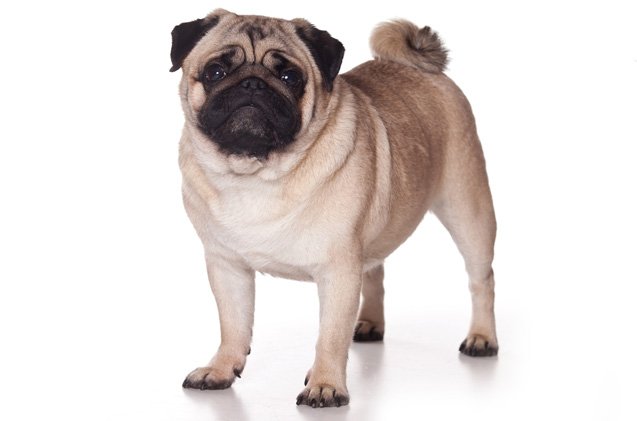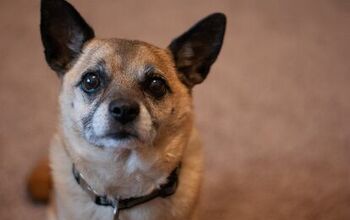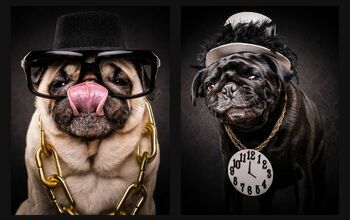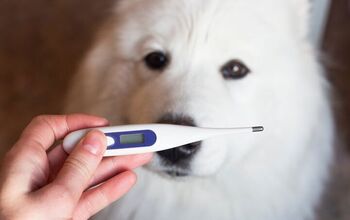Pug


About Pug
The Pug can be one of the most polarizing breeds of dog out there: some people think they’re immeasurably cute, and some people don’t mince words, simply decrying them as “ugly.” It’s hard to imagine anyone where dare say something so horrible about this wonderful animals, but it is tragically true. If you’re a Pug-lover, you’ll probably find that no breed in the dog world quite pulls on your heart strings like this tiny creature. They are just that lovable.
Some people think that Pugs are related to Bulldogs, and given the physical similarities between the two, it’s hard to debate that theory. But this dog breed is generally of a disposition that is quite different than that of Bulldogs. They can generally be quiet and friendly, or sometimes rather rambunctious and outgoing.
If you’ve read this far, you’ll probably agree that there’s no breed quite like the Pug. Even its puppies have a cute name – Puglets! But there’s more to this breed than meets the eye, and that’s exactly what we’re going to discover in this brief guide to the dog breed.
Want to know if a Pug is the right dog to bring home to your family? Good news, you’ve come to the right place to find out. All you need to do is keep your eyes glued to this page and scroll away. Everything that you could possibly want to know about the Pug is about to be revealed. So, read away and by the time that you’re done this article, you’ll know whether or not your need to race out to your nearest Pug breeder.
If you’re a Pug-lover, you’ll probably find that no breed in the dog world quite pulls on your heart strings like this tiny creature.
Pugs have Chinese origins, dating back to ancient China, making the breed an ancient and historic breed. These dogs were actually bred back in ancient China to be perfect complements to the Emperor’s lap, which partially explains the form-fitting and lap-lounging shape that Pugs retain to this day today. There is even reference to a “short-mouthed dog” in the works of Confucius.
Pugs have become popular in the Western world as well. The Dutch East India Company imported these dogs to the Western world in the 16th century, giving Pugs as strong a history in Europe as many breeds. Pugs even became the official dog of the House of Orange in 1572. The breed can also be found in a number of historic European paintings and portraits.
Pugs became popular in France in ensuing centuries. Josephine, before her marriage to Napoleon, had her dog carry messages for her. That dog was a Pug and one of many thriving in France at the time.
Today, Pugs are known as mild-mannered dogs perfect for modern and city life – an odd thing considering how these dogs have enjoyed lavish surroundings even in the ancient World. However, Pugs are quite adaptable and amenable dogs who do well in practically every environment, no matter how big or small.
Because Pugs can be traced so far back to ancient times, there’s little to read about the pedigree. There are, however, some theories about what breeds this dog might be linked to. For example, many people believe that the Bulldog arose out of a three-dog mix that included the Pug. Unfortunately, we don’t have much more specific historical info available about the pedigree of these little bundles of joy.
Pugs don’t have a highly specific diet as far as dogs go – meats, vegetables and unprocessed foods generally work the best. Be sure to watch your dog’s weight, however, as its short legs can lead to joint problems down the line. A Pug should have a slightly odd torso-to-leg ratio, but it’s best not to exceed this to the point that your Pug is overweight.
If you are in any way concerned about establishing or altering your dog’s diet, it’s always wise to consult with your veterinarian. While dog food manufacturers and pet blogs may provide useful feeding guidelines, they are still only guidelines and should not be treated as gospel. All dogs are different after all, each with their own needs. The only person qualified to determine the specific dietary needs of your personal pooch is a vet. So always consult with your Pug’s good doctor before making any significant changes to the food that you pour into their bowl.
Even its puppies have a cute name – Puglets!
Pugs are generally considered a companion dog; they were often bred for royalty as “lap” dogs and can be seen in painting as living out that exact role. For that reason, they are well-suited for city and apartment life.
Pugs are great around children but can be strong-willed and thus difficult to train if you don’t have a lot of experience in handling dogs. Should you choose to train them yourself, it’s vital to focus on positive reinforcement and rewards. Overly negative training is closer to abuse and should be avoided at all costs. However, it’s probably best to enrol your pug in some sort of training program. Not only will that take the pressure off, but it will help with the pup’s socialization.
Pugs can be heavy for their small frame considering that a lot of weight is in its torso and its disproportionately sized head. Generally a weight of around 18 pounds is where you want your dog to be at – but just try to keep your Pug looking healthy.
As mentioned, Pugs are not quite the “pack” dogs that others might be, and as such, can be surprisingly stubborn rather than simply following orders. Pugs enjoy lounging around and can be relatively quiet compared to a lot of breeds of similar size.
If you have children, you’ll find that Pugs and children often get along famously. Since Pugs don’t grow very large, the breed also seems to be in a permanent state of puppiness, which is enjoyable for children of all ages.
Pugs can make good guard dogs capable of making noise and can occasionally bark at visitors. However, the won’t offer must protection beyond some parks, so keep that in mind before making them a permanent guard fixture in your home.
Unfortunately, the source of much of the Pug’s cuteness can also be its downfall when it comes to health. The predominant features you notice on a Pug’s face often make it susceptible to eye and face problems. Pugs are also not very good at handling heat, so it’s best to make sure that you don’t take them out on especially hot days or leave them out too long in the sun.
Because Pugs live a generally slow daily life, frequent exercise as well as a healthy diet can be critical to making sure that your Pug lives a long and healthy life. It’s also important to maintain regularly scheduled checkups with your vet (especially as your pooch enters into its senior years) to ensure that any potential health issues are identified and treated as soon as possible.
This breed typically lives to around 12-14 years.
Pugs aren’t big exercisers by instinct, but they’ll be perfectly capable of handling much of what you throw at it – just keep in mind that their short legs and heavier torso can make things a little less easier for them. Since these dogs are prone to obesity, much like Bulldogs, it’s important to make sure that you exercise your Pug regularly. The Pug’s general friendliness makes for a good city dog, which means that walking your dog in a busy city is a treat. You’ll want to take these dogs out just to see people visibly react to the cuteness. It is quite a sight to behold.
Pugs enjoy lounging around and can be relatively quiet compared to a lot of breeds of similar size.
The American Kennel Club says: “The Pug is well described by the phrase ‘multum in parvo’ which means ‘a lot of dog in a small space.’ They are recognized for their even-tempers, playful personalities, and their outgoing, loving dispositions.”
The short coat of the Pug makes for easy maintenance, and as such, require little grooming. This breed can be everything from a light beige color to black.
Pug puppies, known as “puglets,” certainly have the best name for puppies in the entire dog breeding world. As expected, puglets are adorable, fragile, and easy to love. They need to be handled gently because their tiny little puppy forms are so fragile. Training and socialization should begin as soon as possible. Don’t let those early and impressionable puppy days go to waste. It’s far easier to train good dog behavior at an early age than it is to try and course correct and naughty adult Pug. This breed also retain a certain level of their puppy nature deep into their adult years. So if you fall hard for your pug puppy, don’t worry about anything changing too dramatically as they grow out of the puglet phase.
Photo credit: Utekhina Anna/Shutterstock

Amy Tokic, Editor of PetGuide.com, is a passionate animal lover and proud pet parent of Oscar, a Shih Tzu/Chihuahua cross, and Zed, a Japanese Chin. Her love of animals began in kindergarten, when she brought her stuffed dog Snoopy into class with her every day. Now, she writes about her adventures in pet ownership and tirelessly researches products, news and health related issues she can share with other animal enthusiasts. In her free time, Amy loves perusing used book and record stores, obsessing over the latest pet products available and chasing squirrels with wild abandon (a habit attributed to spending too much time with her pooches).
More by Amy Tokic
























